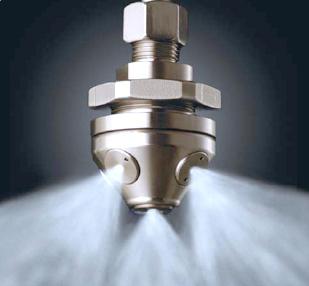Fire extinguishing is a complex system of various devices that are interconnected, the main purpose of which is to detect the occurrence of a fire source in the early stages of its development, as well as timely elimination. In the modern world, automatic fire extinguishing means are used, which are increasingly being installed in conjunction with warning and evacuation control systems. Most often, all of the above components are supplied complete and form a single complex. At present, a typology is used, which is based on the types and methods of receipt of any extinguishing agent to the source of ignition. Consequently, the following categories are distinguished: foam, water (which includes installations with a finely dispersed liquid, such as deluge and sprinkler fire extinguishing systems), aerosol, powder and gas. The material presented below will provide an idea of each of them.
Foam extinguishing
This type is most often used to eliminate fires of flammable and combustible liquids located in tanks located both inside and outside buildings. A foam type fire extinguishing system is used primarily to ensure the safety of certain parts of buildings, transformers and locally located electrical equipment. A characteristic feature of this complex is the presence of a special reservoir in which the foaming agent and metering mechanisms are located, however, the constituent components of the substance themselves are stored separately.
Water systems

As mentioned earlier, there are two categories: the deluge fire extinguishing system and the sprinkler. As a substance designed to eliminate the source of ignition, either ordinary water or enriched with special additives is used. Since such systems are often installed in modern practice, we will consider them in more detail. Sprinkler systems are used when it is necessary to eliminate a small fire in a building, the temperature in which does not drop below zero degrees. This is due to design features. The complex itself is a pipeline with special spray heads. In the event of a fire, the sensors are triggered, and the water located there immediately spills onto the outbreak. In turn, the deluge fire extinguishing system is characterized in that there is no water in the main system. It is supplied only by command of automation or when a special signal is given by a person. In addition, disposable irrigation elements are not used here. In the general case, the deluge fire extinguishing system is used not only as a mechanism for eliminating the source of ignition, but also as a means of cooling the air masses, which prevents the spread of fire.
Aerosol complexes
This type was widespread in previous years, but is rarely used in modern equipment due to low efficiency. To successfully eliminate the source of fire, a sealed room was required. In addition, such devices represented a significant danger to the life and health of people.
Powder fire extinguishing system
It is based on the use of a special substance, due to which the elimination of fire occurs. It must be remembered that such systems are not able to ensure the complete elimination of fire, which means that their application areas are limited.
Gas extinguishing
These systems are a combination of stationary-type technical devices, the principle of which is based on the timely release of the fire extinguishing compound. There are modular and central systems that operate on compressed or liquefied gases.